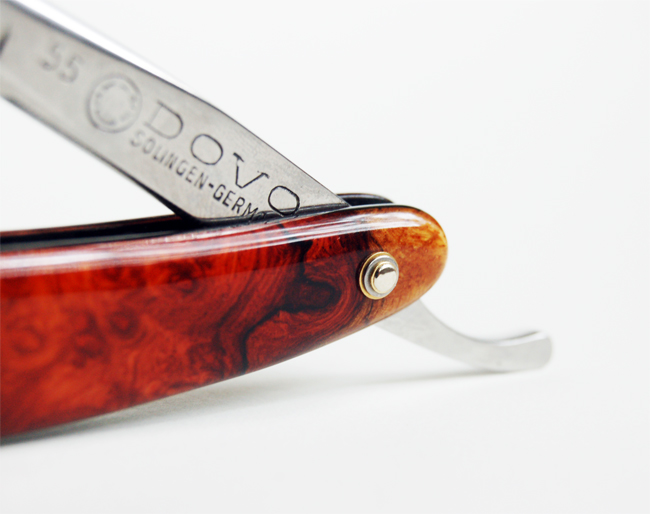Results 1 to 8 of 8
Thread: CA Woes
-
12-29-2009, 02:47 AM #1
 CA Woes
CA Woes
Well, I had an interesting experience today... under the impression given to me by a brief tutorial on CA finishes I had read that they were an 'easy' way to get 'glasslike' surfaces....
A hell of a headache and mess later, and this is what I ended up with....
I'd love some suggestions, because I have seen GORGEOUS wet-wood type finishes coming from guys who use CA....
But there is NO WAY it's 'easy'!
-
12-29-2009, 02:55 AM #2

I am sure others can post there findings, but what you experienced is similar to what I have had happen with CA finishes on wood. The wood will change the level of it though. I assume it is from the CA seeping into the wood in different stages due to densities of grain and such.
I do 3 coats myself and then sand down even with 220 and then a quick polish up with 400 grit and add two more coats with sanding in between, then the final polish up. I usually prep the wood up to 600 before application and finish with micromesh. I discovered that a nice sanding block is extremely useful on scales. Without it I had issues with the edges wearing off faster than the center sections which needed it more. Pure hand work though for me be it knife work or the little bit of scale work I have done so far.
-
The Following User Says Thank You to Muirtach For This Useful Post:
BKratchmer (12-29-2009)
-
12-29-2009, 03:00 AM #3"My words are of iron..."


- Join Date
- Oct 2006
- Posts
- 1,898
Thanked: 995
These glues are useful as a filler for pores or cracks. I've seen CA finishes that are as spectacular as full-on stabilizing processes. They will add some strength to weaker materials but not to the same degree as good material alone, or completely stabilized material. There are some guys fooling around with simple vacuum equipment to get deeper penetration. These are the hand powered brake line vacuums cobbled to metal topped jars.
How long did you let the glue setup? If any of the glue was still wet, even under a hard skin type surface, you're going to drag it around more than you will rub it in.
Some folks will use the accelerant but that also increases heat. I've seen that discolor wood where it wasn't wanted. I've had better luck letting it dry completely then sanding down to the surface again. If holes remain to be filled, repeat.
What you have on the sample piece is quite typical of how CA looks when dried. I think it will have filled some of the surface. Try thinner glue for better penetration, go slow and build up layers.
Hope this helps.
What Muirtach said too.“Nothing discloses real character like the use of power. Most people can bear adversity. But if you wish to know what a man really is, give him power.” R.G.Ingersoll
-
The Following User Says Thank You to Mike Blue For This Useful Post:
BKratchmer (12-29-2009)
-
12-29-2009, 04:21 AM #4

Thanks guys! Episode two of this saga will be me grinding the bulk of this off with a quick hit on the fine-grit belt sander and then building up some layers slowly...carefully polishing.
I've seen some spectacular scales with a CA finish, and I'd love to find a way to make it a production-efficient (I.E. not horrendously expensive) finish without having a buffer.
-
12-29-2009, 04:28 AM #5
-
12-29-2009, 02:12 PM #6

The problem is the glue you are using. That stuff is too thick. You need some very thinned CA. Buy some of this: Buy Hot Stuff Instant CA Glue, 2 Ounces at Woodcraft.com
Then apply a thin line along the scale and quickly rub in smoothly all over the scale. Only a very thin coat. Let dry for an hour and dont touch it. If you touch it it will get that white residue. Do this 4 times. Then sand with 400 grit till smooth. Be careful around the edges cause you can sand through the finish. Then do all of that 2 more time for 12 coats total. Then sand all the way up to 2000 grit and then buff and then you end up with this:

-
The Following User Says Thank You to Aquanin For This Useful Post:
BKratchmer (12-29-2009)
-
12-30-2009, 01:52 AM #7Senior Member

- Join Date
- Apr 2009
- Location
- Arizona
- Posts
- 325
Thanked: 127
I use the CA glue that gives extra time. I buy it at Home Depot, and I don't know what they mean by extra time, it still seems fast to me. When I apply it, I use only an old T-shirt patch as the applicator.
Put some CA on the scale, say in the middle, and then wipe it to the end once or twice. Then move up the scale and do it again.
Once the scale is completely coated, I then take several drops of boiled linseed oil, you can find small containers at Ace Hardware, and wipe it on top of the CA. That acts as an accelerant, only you can handle it then without messing it up.
Let it set for a few minutes, wipe it clean and put on your next coats.
Ray

-
12-30-2009, 02:06 AM #8


 LinkBack URL
LinkBack URL About LinkBacks
About LinkBacks







 Reply With Quote
Reply With Quote
